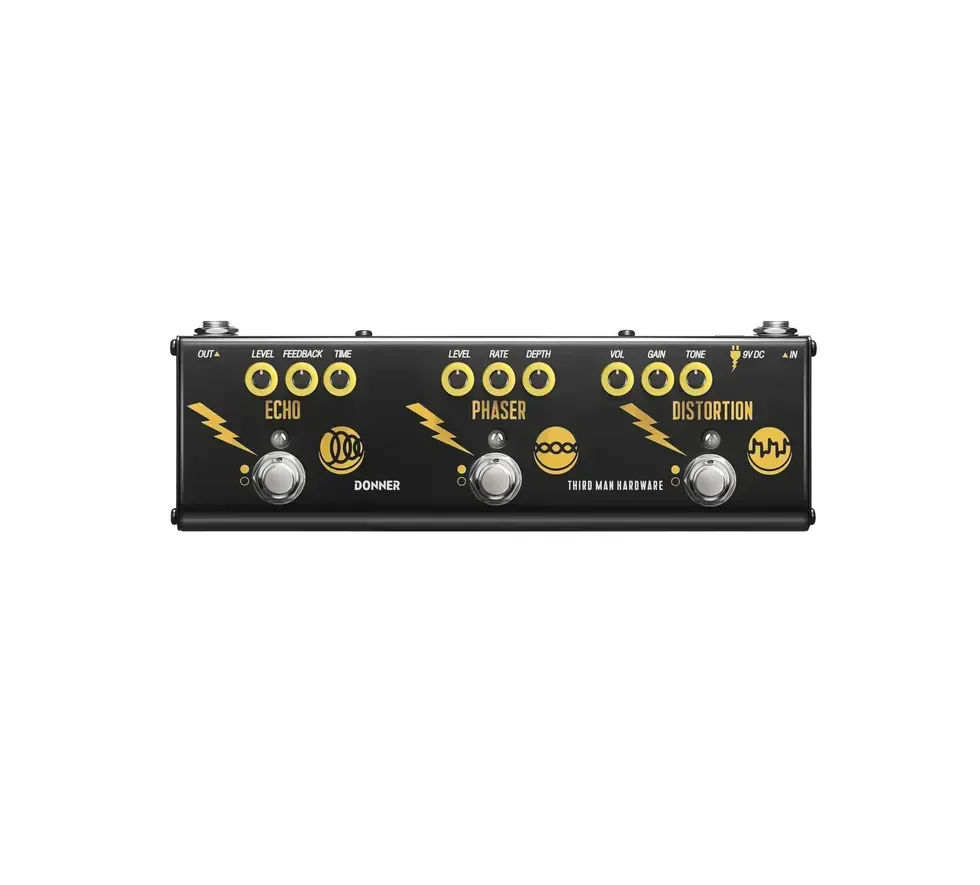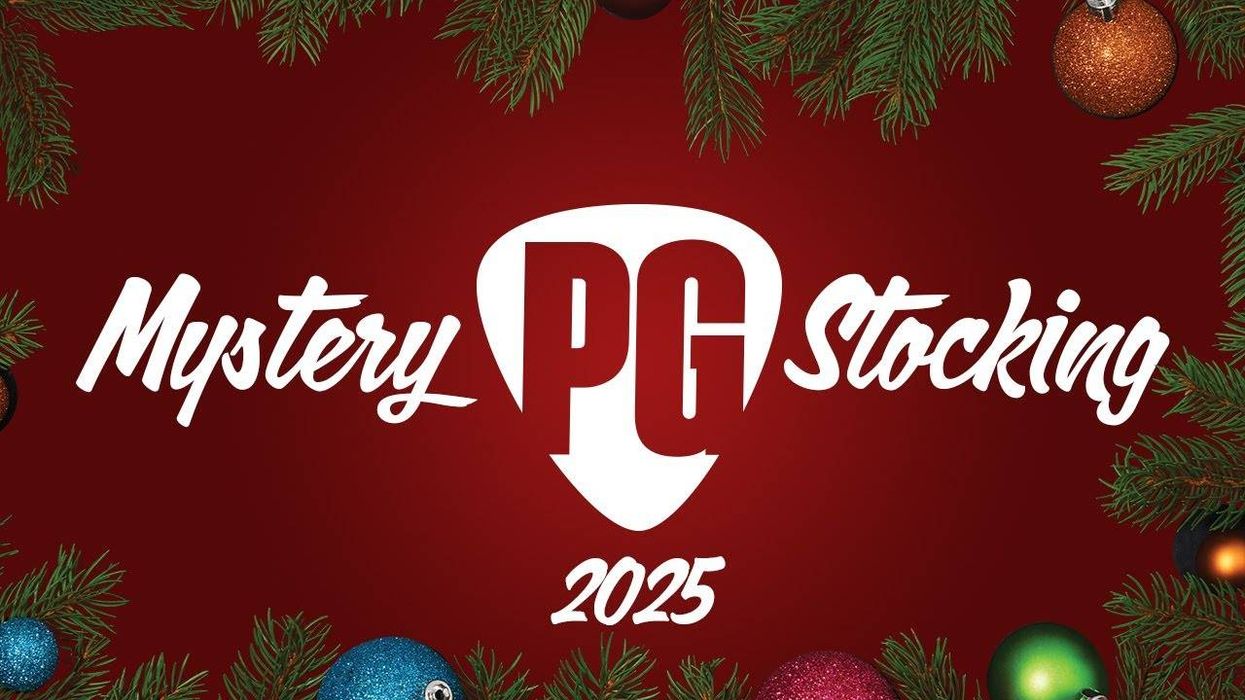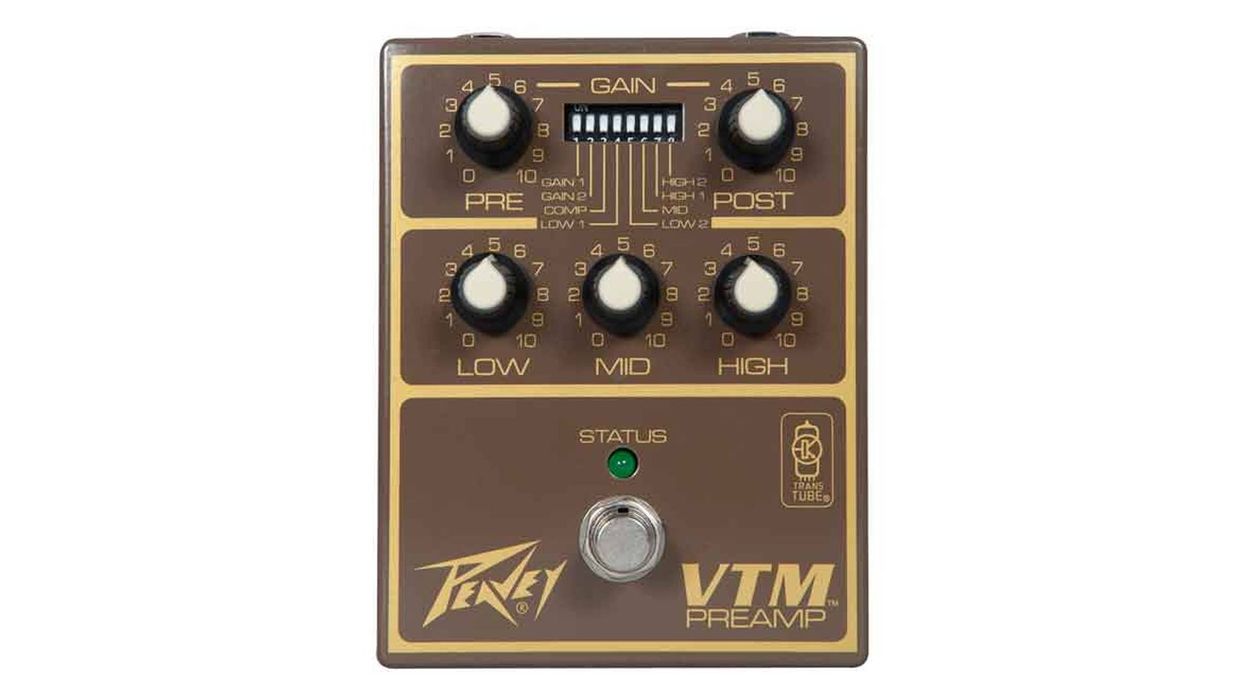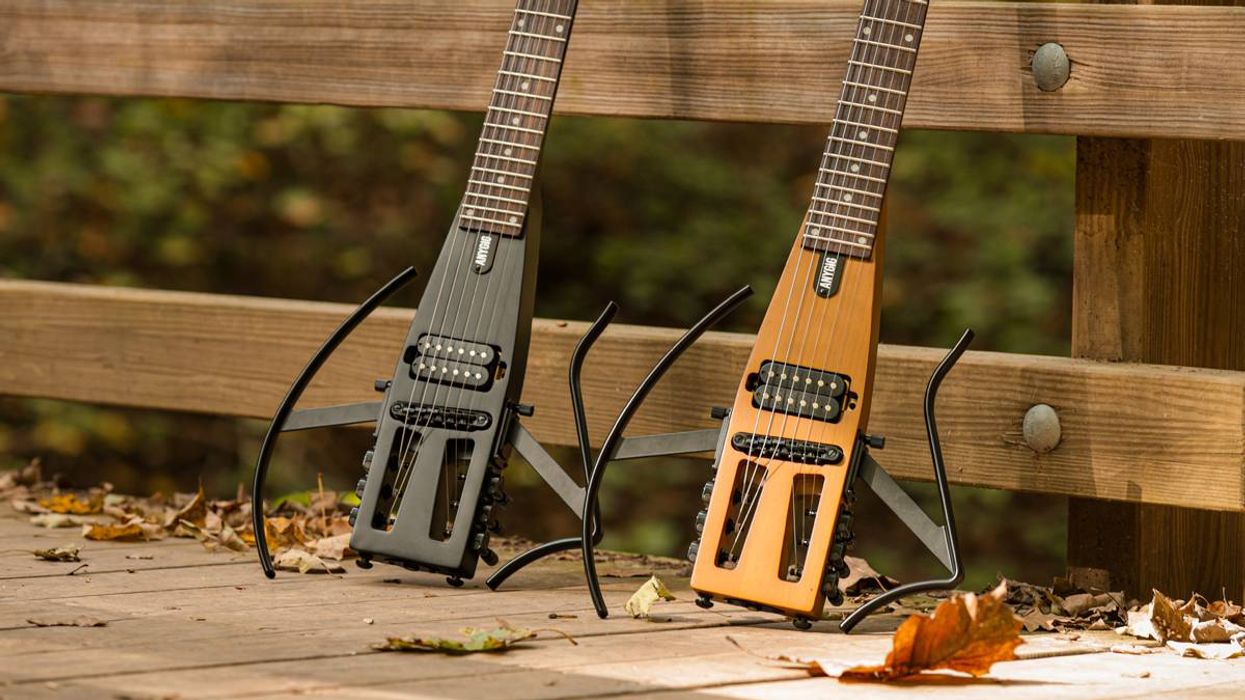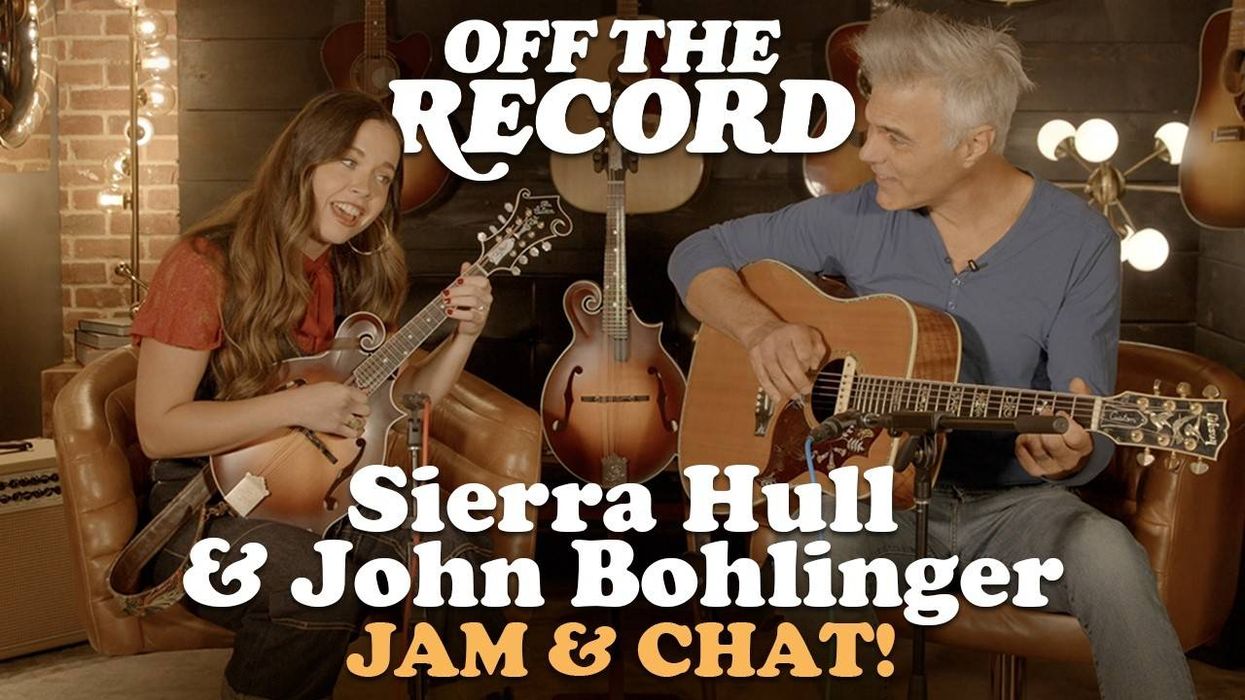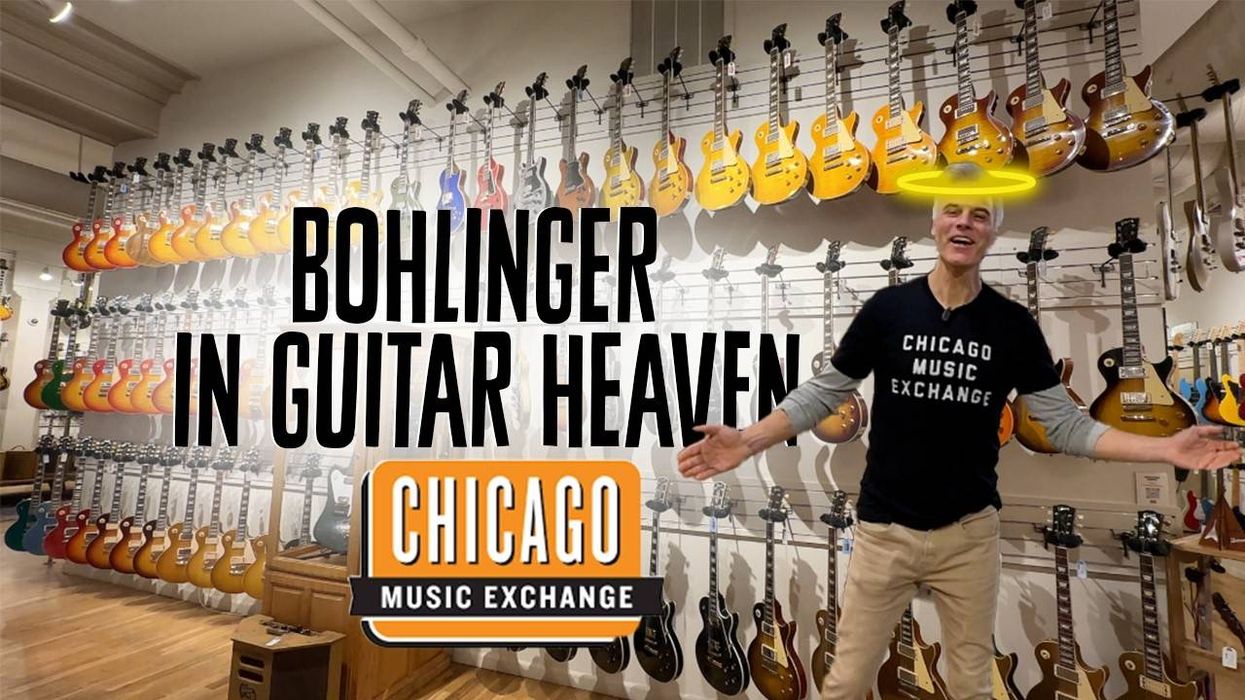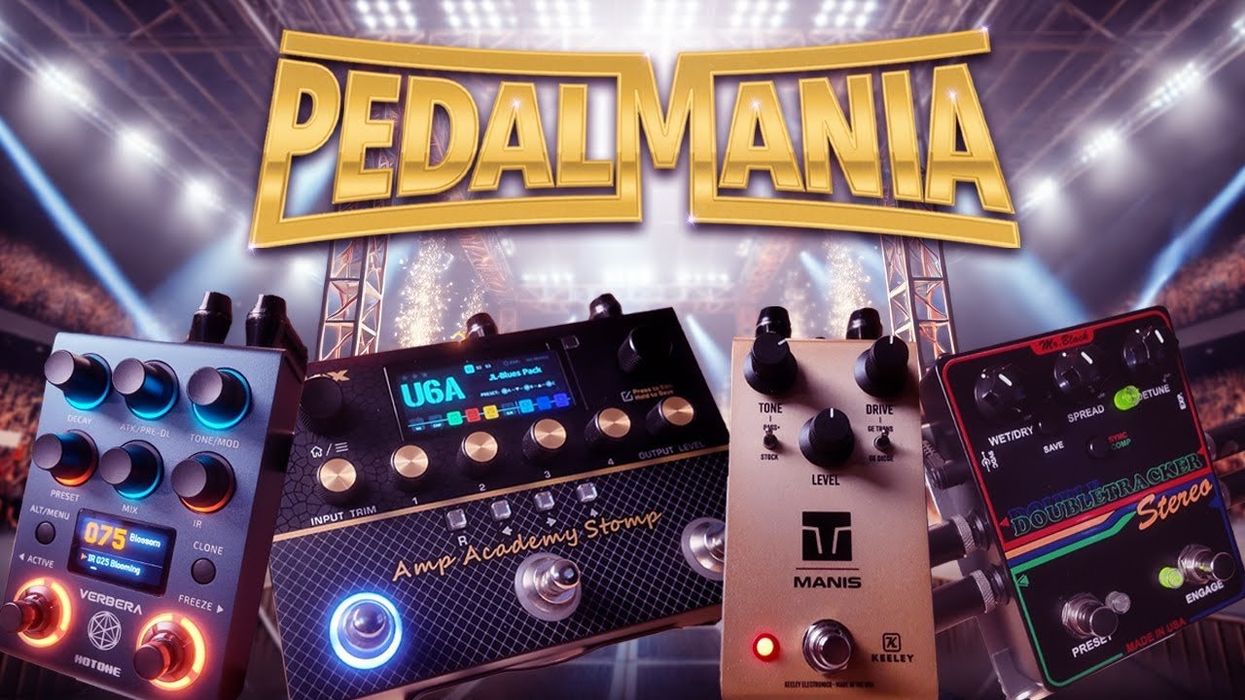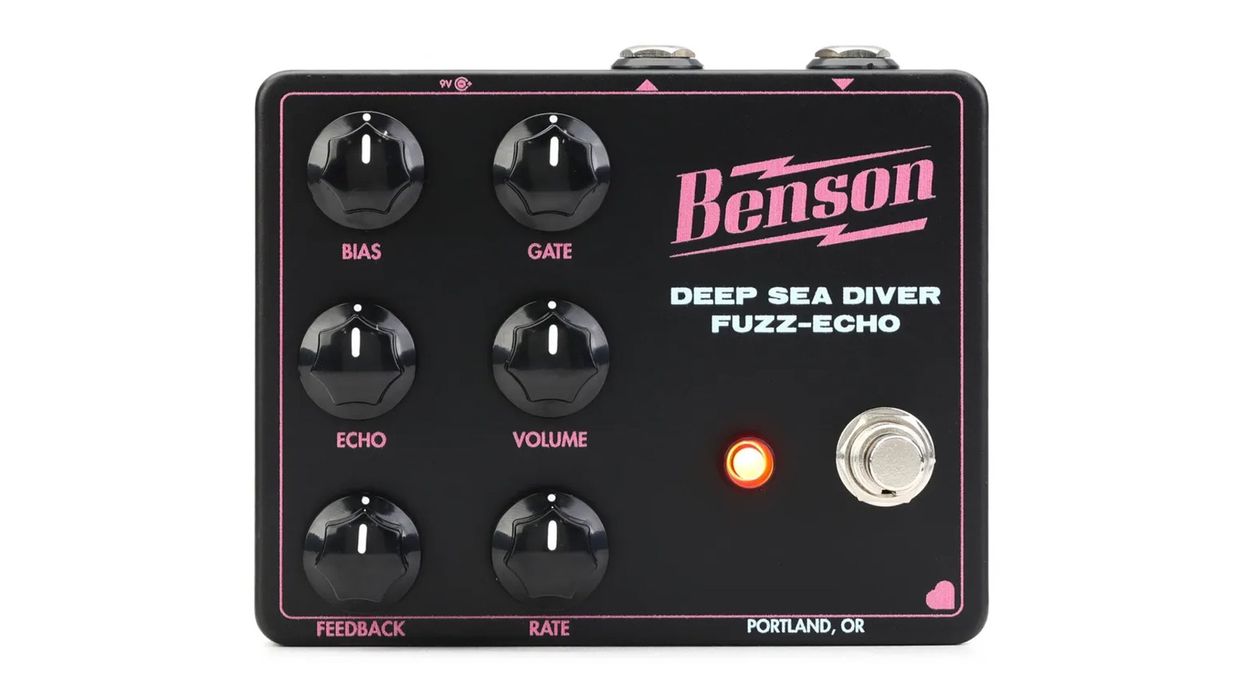A huge part of the early White Stripes mystique, sound, ethos, and identity was tied to guitars and amps that, at the time, you could luck into for cheap at a garage sale. These days, it’s harder to score a Crestwood Astral II, or Silvertone Twin Twelve with a part-time job in the ice cream shop. Back in the late ’90s, though, they were a source of raw, nasty sounds for less than a new, more generic guitar or amp.
Jack White played a big part in making these vintage outcasts desirable. But these are still fine times to make cool sounds for less—especially if you aren’t brand or image conscious. And White, staying faithful to his roots, likes the idea of making sure there’s fewer financial obstacles to making a racket. That led to the collaboration with Donner reviewed here—the Donner X Third Man Triple Threat—a $99 distortion, phaser, and delay combo that you can practically fit in a pencil case.
Light and Little Analog Amalgamator
China-based Donner is probably best known to PG readers for its very inexpensive mini effects, which can usually be had for less than 50 bucks. Keen-eyed effects heads will notice that the Triple Threat looks a lot like Donner’s Alpha Crunch and Alpha Force—three-in-one distortion/chorus/delay units in identically sized enclosures that sell for 69 bucks. The Triple Threat effectively subs a version of Donner’s Pearl Tremor mini phaser for the chorus. While many players will find more utility in the chorus-equipped Donner three-in-one, White’s choice of a phaser substitute is a cool one.
Those consumed with the matter of portability will be tickled by the Triple Threat. It measures about 7 ½" wide and less than 2 ½" deep. It will actually fit in a back pocket. And if you’re committed to making your load-in as light as possible or maximizing square inches in a tiny apartment, the Triple Threat is less problematic than the king-sized Mr. Goodbar on your desk that you shouldn’t eat anyway. While it’s not heavy by any means, the Triple Threat feels super sturdy. The tiny knobs might be the only part of the design that I would worry about in terms of fragility—particularly given the very necessary proximity of the knobs to the footswitches. But the removable rubber rings that surround the knobs, which also make them easier to adjust, also work as bumpers of a kind against glancing blows.
Blast, Warp, Repeat….
I don’t think the intent of the Triple Threat is to emulate any particular tone synonymous with Jack White. I’m not as familiar with White’s solo output as I am with that from the White Stripes. But I associate the former with a lot of glitchy fuzz and octave scramble and the latter with the sound of a Silvertone Twin Twelve bludgeoned by a Big Muff or Micro Amp. If he used a phaser anywhere in his catalog, I don’t remember.
White and Donner probably envisioned the distortion circuit in the Triple Threat as the best compromise between simply rowdy and evil. It serviceably covers Jack White sounds ranging from organic amp filth to fuzzier stuff, and can change in feel drastically depending on your guitar. Sixty-year-old lipstick pickups in a Silvertone, for instance, sound super-White Stripes-like—gritting up a clean black-panel Fender at the mellow end of the gain spectrum and sounding fuzzy and mammoth at the more aggressive end. Alnico V PAFs coaxed trashier, more modern, more metallic tones at high-gain extremes. And a Stratocaster spanned SRV-ish and L.A. glam-metal tonalities. A Boss DS-1 is a pretty reasonable touchstone in a very general way. But the wide ranging gain and tone controls give the Triple Threat’s distortion a pretty varied personality.
As mentioned, the Triple Threat’s phaser is based on Donner’s Pearl Tremor. It sounds a little like a script-era MXR Phase 90. However, it’s less thick than that circuit, and even at maximum depth it’s not as bubble-gum chewy as a more modern block-script Phase 90 or a Small Stone. Some of that might be down to what sounds like a slight reduction in low end when the phaser is engaged. But the Triple Threat phaser also requires a level boost. To reach unity gain, you need to set the level at 3 o’clock, which leaves much of the parameter’s lower reaches pretty ineffective.
The delay is uniquely quirky, too. At its highest mix levels, repeats are much louder than at equivalent settings on analog echoes, including the MXR Carbon Copy and Ibanez Analog Delay. That can open up cool textural options based on pronounced echoes. Lower mix levels evoke some of the hazy qualities of the Carbon Copy, Memory Man, DM-2 and others. But the Triple Threat’s repeats are brighter than any of those delays, sounding closer to an MXR’s Carbon Copy Bright. Some analog delay users will miss the dark taper of vintage BBD units. The greater treble response also means the effect swells a little less smoothly to the self-oscillation point. But despite its brighter profile, the Triple Threat’s delay is still thicker sounding than the Boss DD-3 I used as a digital comparison.
The Verdict
At 99 bucks, it’s hard to fault differences between the Triple Threat’s individual effects and analog equivalents that, for the most part, cost $100 to $160 by themselves. In spite of its quirks, the Triple Threat’s combination of tiny size, convenience, ease of use, and range of tones make it a steal. And any pro with a simple rig that more-or-less mirrors this one could do a fly-in or backline gig with confidence that cool sounds—and a very light load-in—await.

